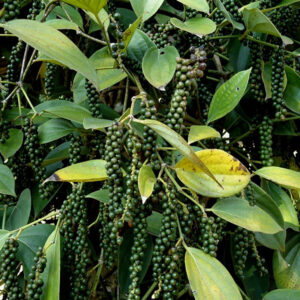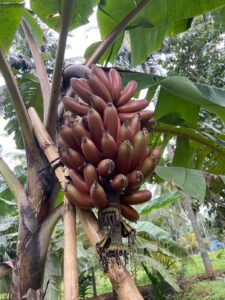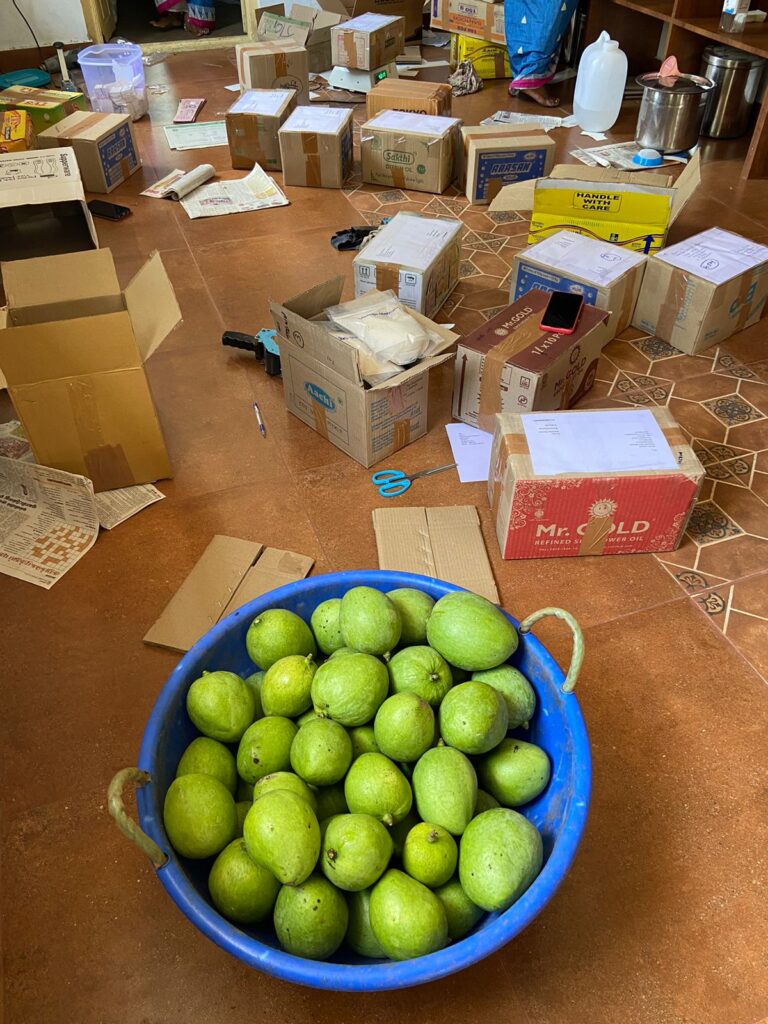Product Details

Pepper Plantation
 Karimunda is a popular variety of black pepper (Piper nigrum) cultivated in certain regions. It is known for its strong flavor and aromatic qualities. Karimunda pepper varieties thrive in tropical and subtropical climates. They require warm temperatures, high humidity, and well-drained soil for optimal growth. Karimunda pepper plants are typically propagated through stem cuttings or layering. They are usually grown on support systems like poles or trellises. Adequate spacing and proper care are necessary for healthy plant development. Regular watering, proper nutrient management, and weed control are essential for successful Karimunda pepper farming. Pruning and training the plants help promote air circulation, light penetration, and higher yields. Karimunda pepper is harvested when the berries turn red or yellow, indicating maturity. The berries are then dried to produce black pepper. Drying methods include sun drying or mechanical drying to reduce moisture content and enhance flavor.
Karimunda is a popular variety of black pepper (Piper nigrum) cultivated in certain regions. It is known for its strong flavor and aromatic qualities. Karimunda pepper varieties thrive in tropical and subtropical climates. They require warm temperatures, high humidity, and well-drained soil for optimal growth. Karimunda pepper plants are typically propagated through stem cuttings or layering. They are usually grown on support systems like poles or trellises. Adequate spacing and proper care are necessary for healthy plant development. Regular watering, proper nutrient management, and weed control are essential for successful Karimunda pepper farming. Pruning and training the plants help promote air circulation, light penetration, and higher yields. Karimunda pepper is harvested when the berries turn red or yellow, indicating maturity. The berries are then dried to produce black pepper. Drying methods include sun drying or mechanical drying to reduce moisture content and enhance flavor.
Areca Palm Plantation
 Areca palm (Areca catechu) varieties, there are several options you can consider for a plantation Also known as Betel Nut Palm, this variety is widely cultivated for its edible nuts and is commonly used in traditional medicine. This variety is known for its vibrant red-orange colored crownshaft, which adds a splash of color to any landscape. Inter C Mangala Areca nut Plant is a hybrid variety of Mangala Areca nut. Inter mangala is a high yielding variety with 2000-2500 nuts per tree when grown up. this variety is smaller in size compared to the standard Areca catechu. It is often chosen for its compact growth habit. Also called the Golden Cane Palm or Yellow Butterfly Palm, this variety features graceful, arching fronds with a yellowish-green color. This variety is characterized by its large, decorative fronds and is often chosen for its ornamental value.
Areca palm (Areca catechu) varieties, there are several options you can consider for a plantation Also known as Betel Nut Palm, this variety is widely cultivated for its edible nuts and is commonly used in traditional medicine. This variety is known for its vibrant red-orange colored crownshaft, which adds a splash of color to any landscape. Inter C Mangala Areca nut Plant is a hybrid variety of Mangala Areca nut. Inter mangala is a high yielding variety with 2000-2500 nuts per tree when grown up. this variety is smaller in size compared to the standard Areca catechu. It is often chosen for its compact growth habit. Also called the Golden Cane Palm or Yellow Butterfly Palm, this variety features graceful, arching fronds with a yellowish-green color. This variety is characterized by its large, decorative fronds and is often chosen for its ornamental value.
Banana Plantation

Banana Cultivation Select a suitable site with well-drained soil and sufficient sunlight for banana cultivation. Prepare the soil by removing weeds, loosening it, and incorporating organic matter or compost. Plant healthy banana suckers or tissue-cultured plants in the soil, spacing them adequately. Provide regular watering to keep the soil moist, and apply balanced fertilizers at appropriate intervals. Control pests and diseases, and monitor the growth of the banana plants. Harvest the fruits when they reach the desired maturity, and cut the mother plant after fruiting to allow new shoots to grow. Banana can be intercropped with various plant varieties, Red Banana, Nendran Banana The intercropping system helps optimize land use and enhance nutrient cycling, resulting in a more sustainable and productive cultivation Other varieties based on the requirments.
Millet's Benefits
Millet is rich in dietary fiber, both soluble and insoluble. The insoluble fiber in millet is known as a “prebiotic,” which means it supports good bacteria in your digestive system. This type of fiber is also important for adding bulk to stools, which helps keep you regular and reduces your risk of colon cancer. Millet is rich in niacin, which helps your body manage more than 400 enzyme reactions. Niacin is also important for healthy skin and organ function. In fact, it’s such an important compound that it’s often added to processed foods to enrich them. Millet, especially the darker varieties, is also an excellent source of beta-carotene. This natural pigment acts as both an antioxidant and as a precursor to vitamin A, helping your body fight off free radicals and supporting the health of your eyes.
Nutmeg Plantation
Select a suitable site with well-drained soil and a warm, tropical climate for nutmeg plantation. Prepare the planting area by clearing weeds, tilling the soil, and incorporating organic matter or compost for improved fertility. Plant nutmeg seedlings or grafted trees at a spacing of about 8 to 10 meters to allow for proper growth and development. Provide regular watering, especially during dry periods, and mulch around the base of the trees to conserve moisture and suppress weed growth. For a nutmeg plantation of 500 trees, consider incorporating round narrow leaf varieties, known for their compact growth and distinctive foliage. These varieties offer an aesthetic appeal to the plantation while maintaining the potential for high-quality nutmeg production. Nutmeg has been traditionally used to aid digestion, reduce bloating, and alleviate symptoms of indigestion. It can help stimulate the digestive system and improve overall gut health. Nutmeg has antimicrobial properties and can be used as a natural remedy for oral health issues like bad breath, toothaches, and gum infections. It is often included in toothpaste and mouthwashes. It's important to note that while nutmeg offers potential benefits, it should be used in moderation as excessive consumption can have adverse effects.
“Agriculture is the most healthful, most useful,
and most noble employment of man”.
Biologically, it is defined as the process of turning organic debris into worm castings that play a crucial role in increasing the fertility of soil. These castings contain seven times more potash, five times more nitrogen and 1.5 times more calcium than what is found in the topsoil. In addition they have better moisture retention capacity, aeration, porosity and structure than the topsoil. The water absorption capacity of the soil is enhanced thanks to the burrowing action of the earthworm, and the organic content in the castings. Research has shown the castings to hold nine times their weight in water.
Value Addition Product
Anna MillerDesigner
“Kudo Millet offers a range of nutritious and versatile millet-based products, providing a wholesome and satisfying option for those seeking gluten-free alternatives. ”
RamyaHomemaker
“Cane jaggery powder provides a natural and flavorful alternative sweetener with its rich and distinct taste. ”
Ruth PierceCustomer
“ Kambu (pearl millet) flakes offer a nutritious and gluten-free option for a wholesome breakfast or snack. ”



